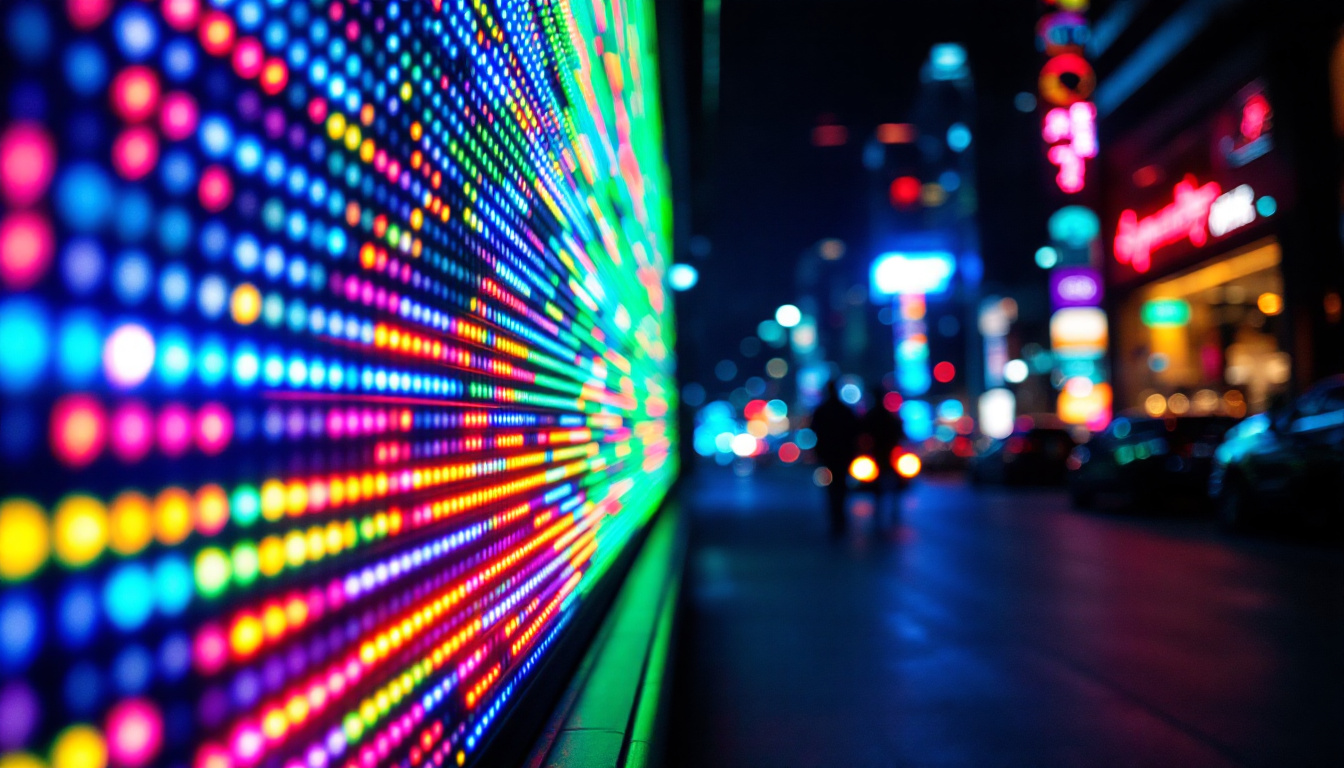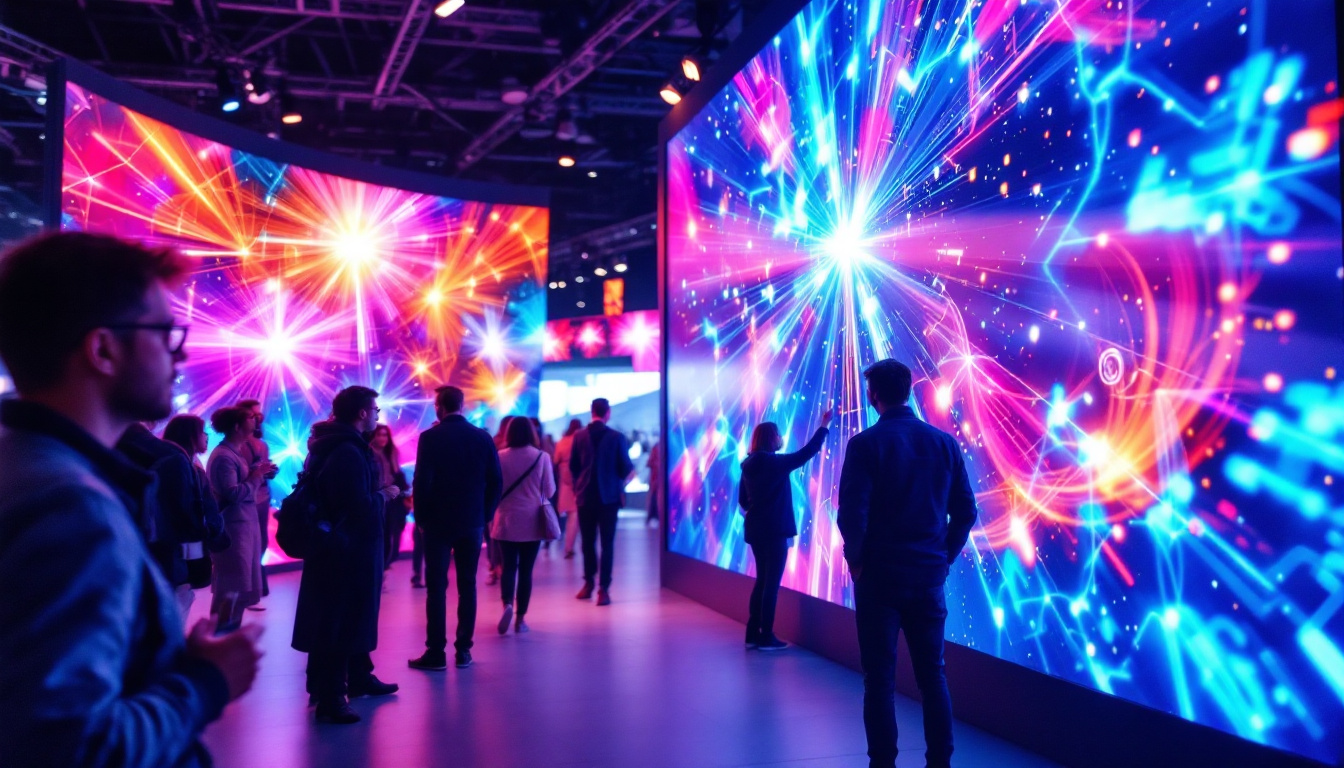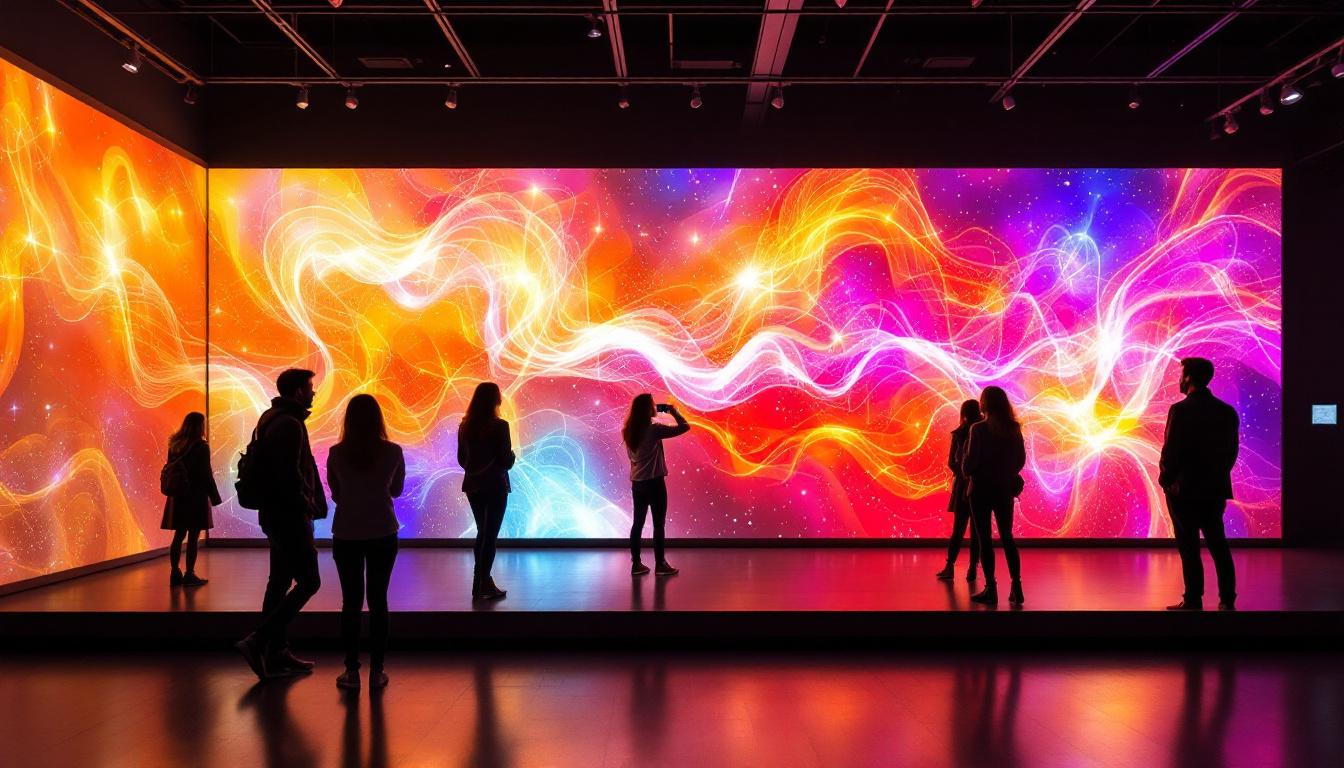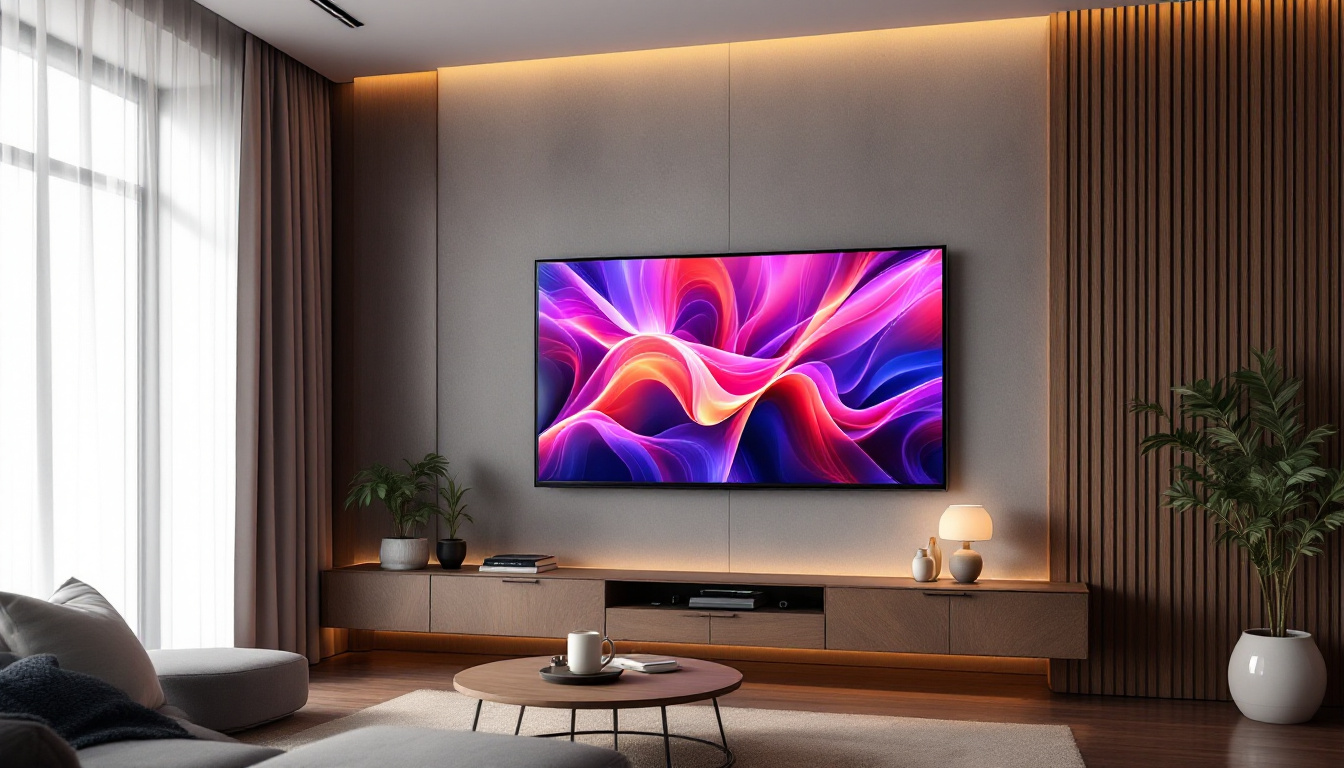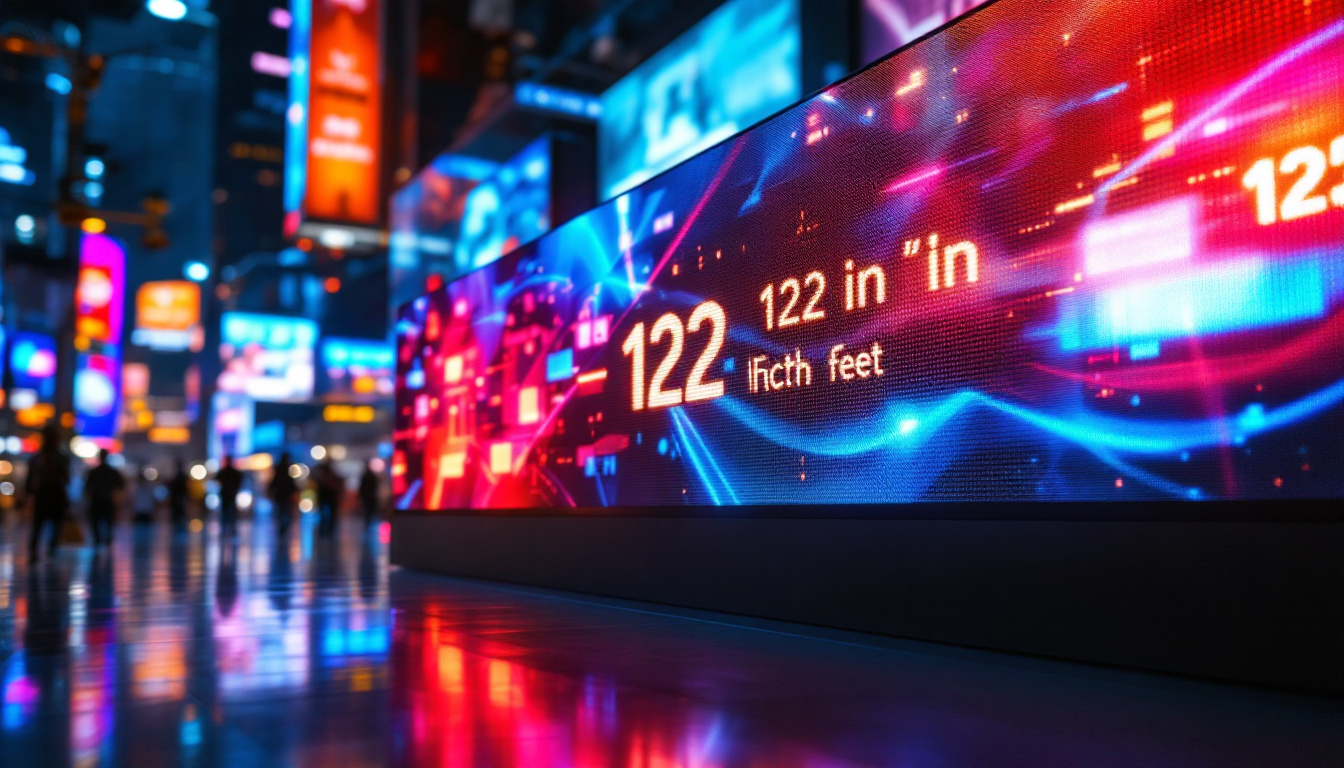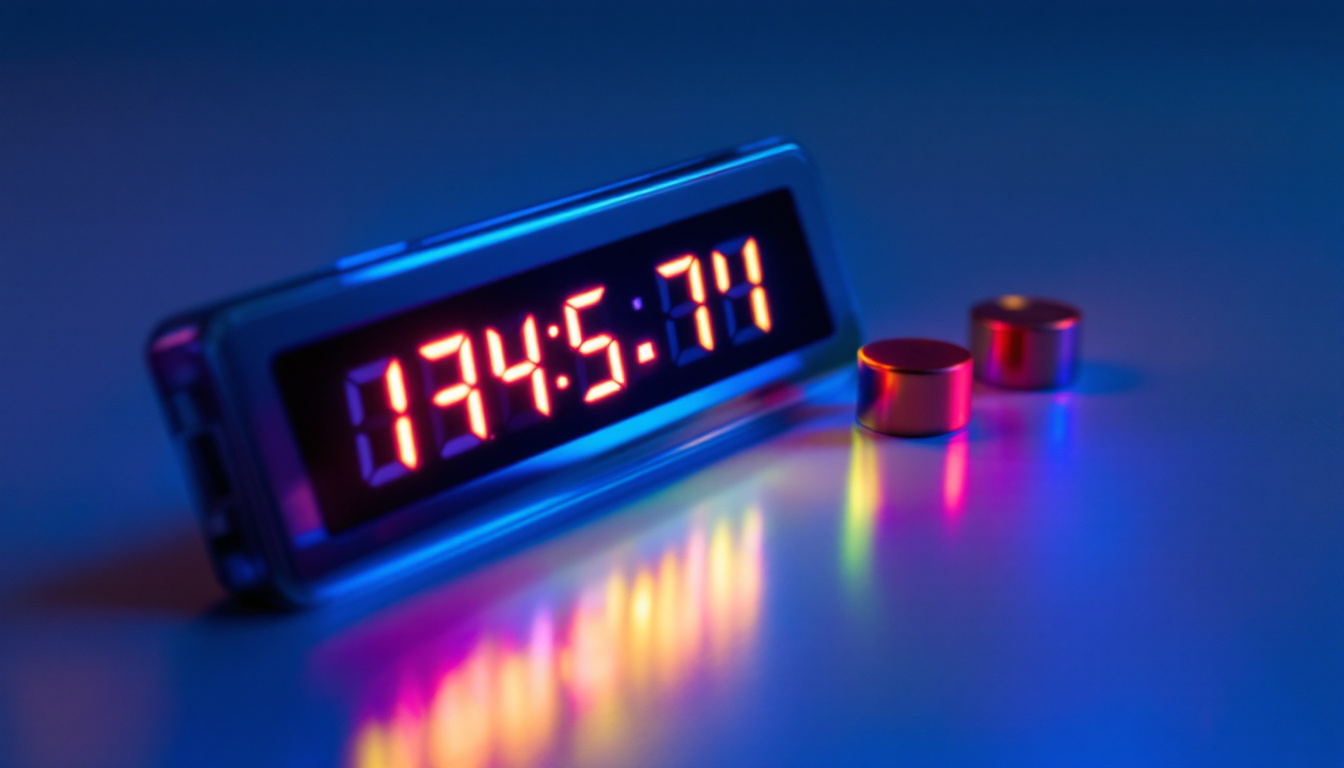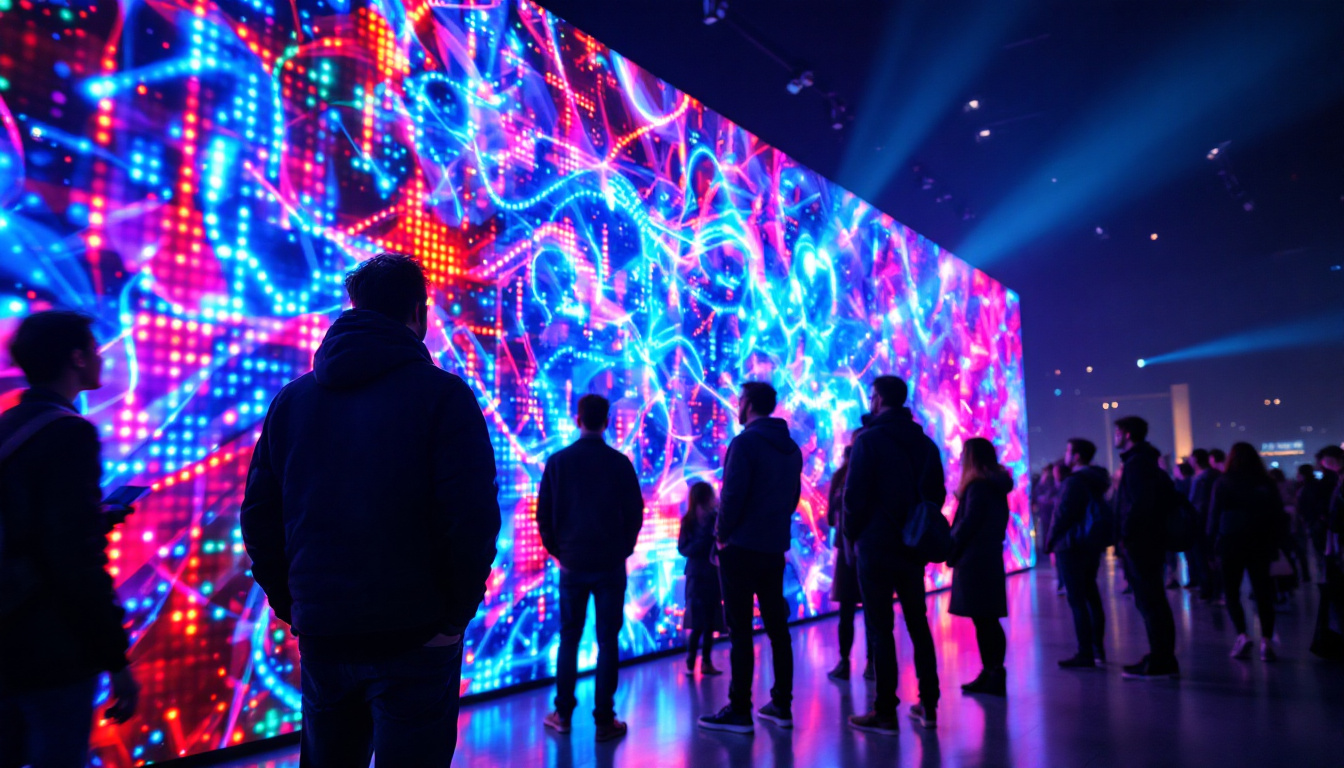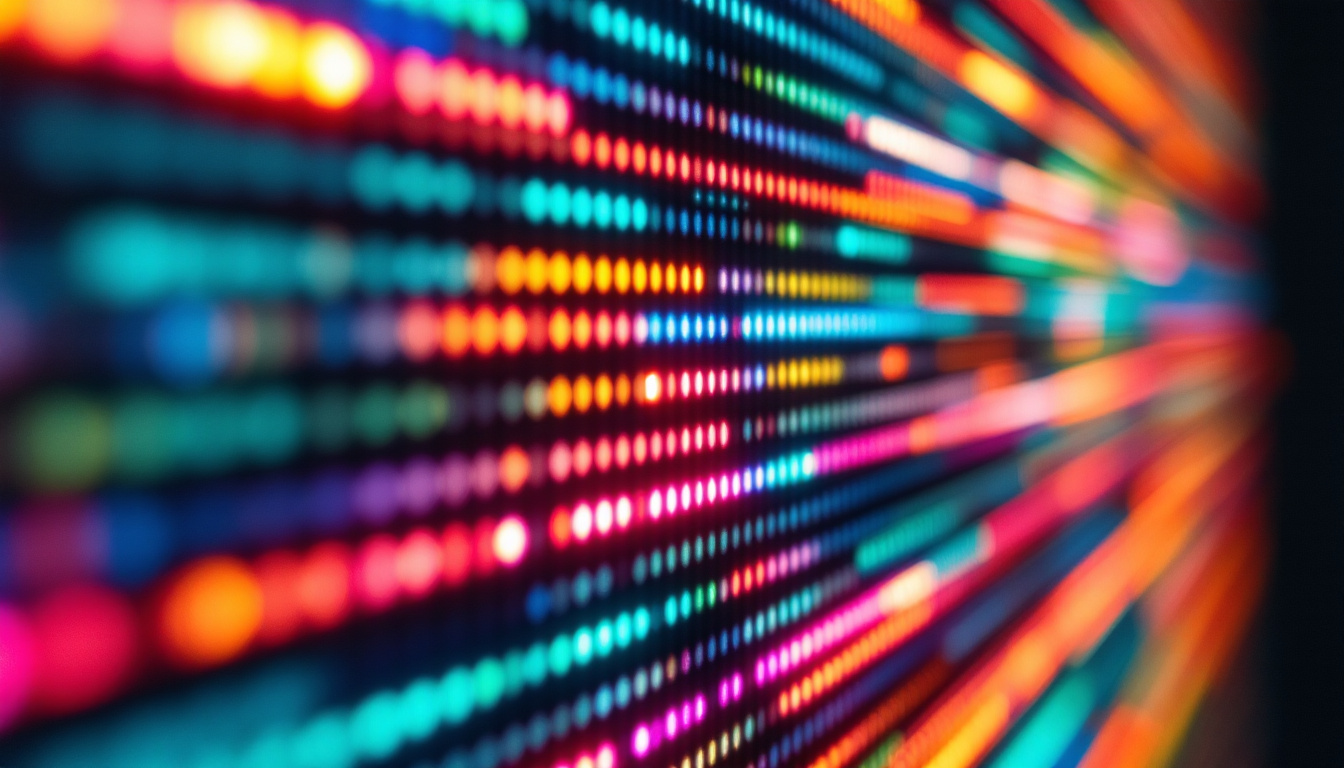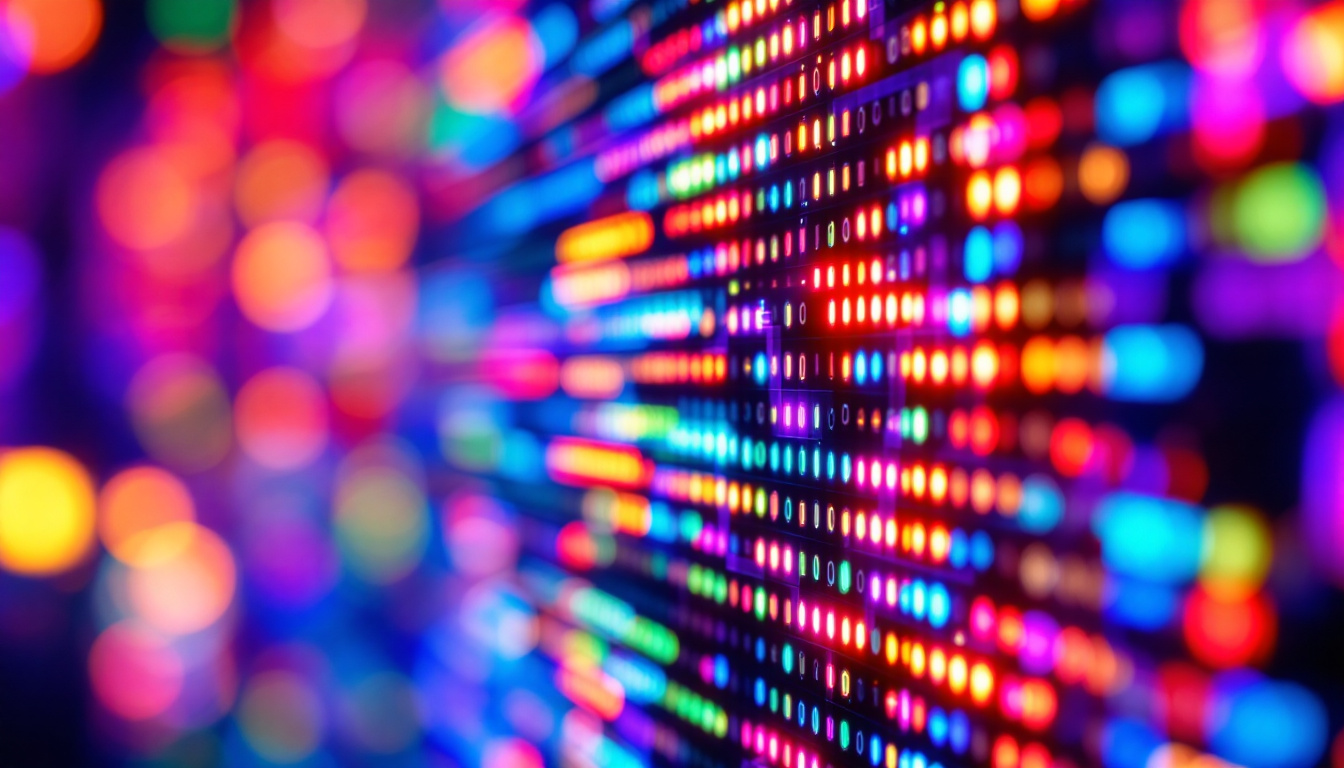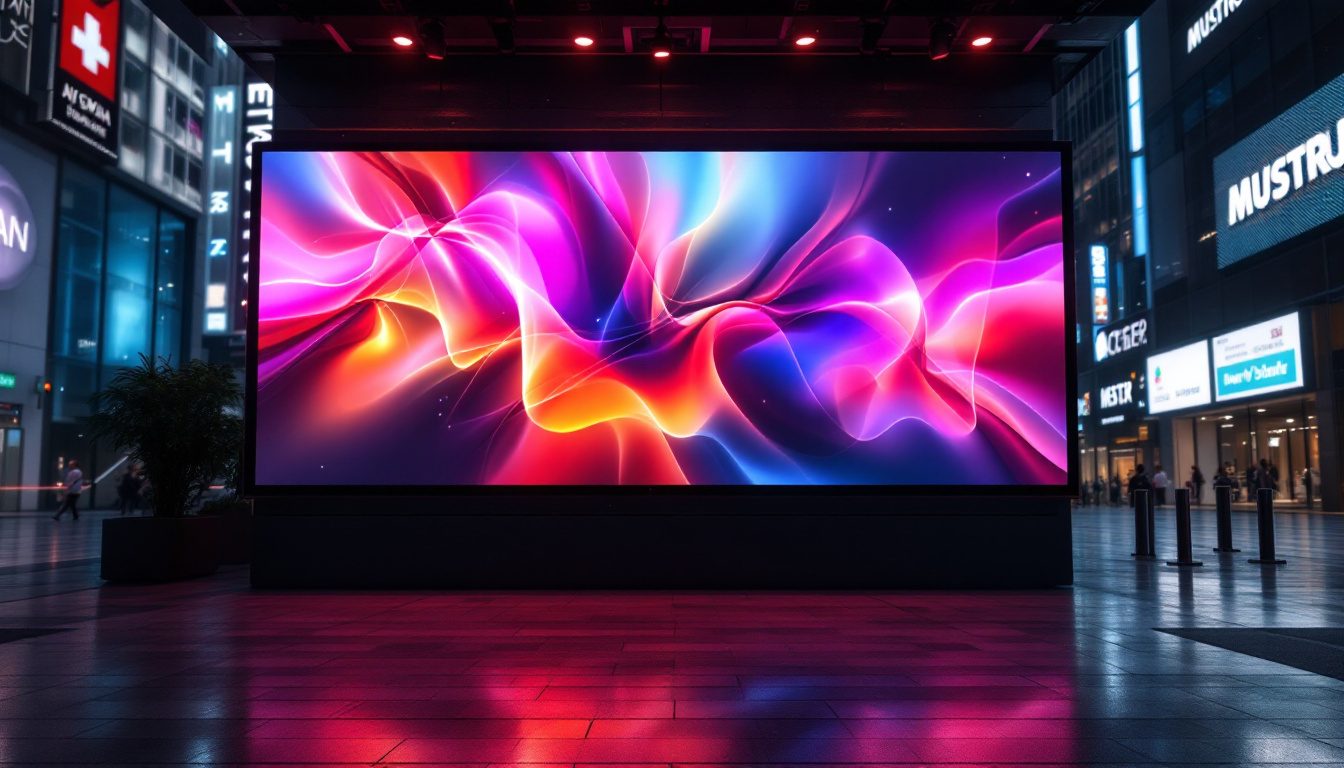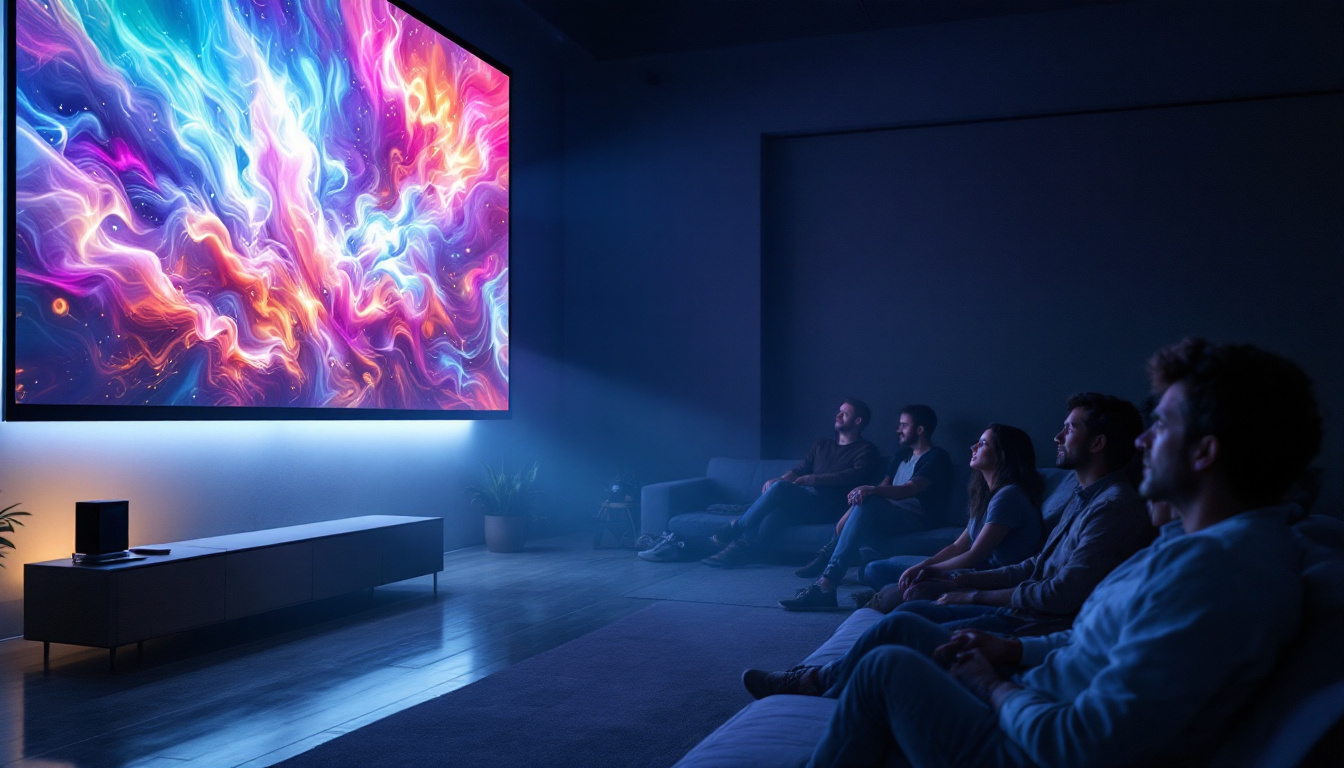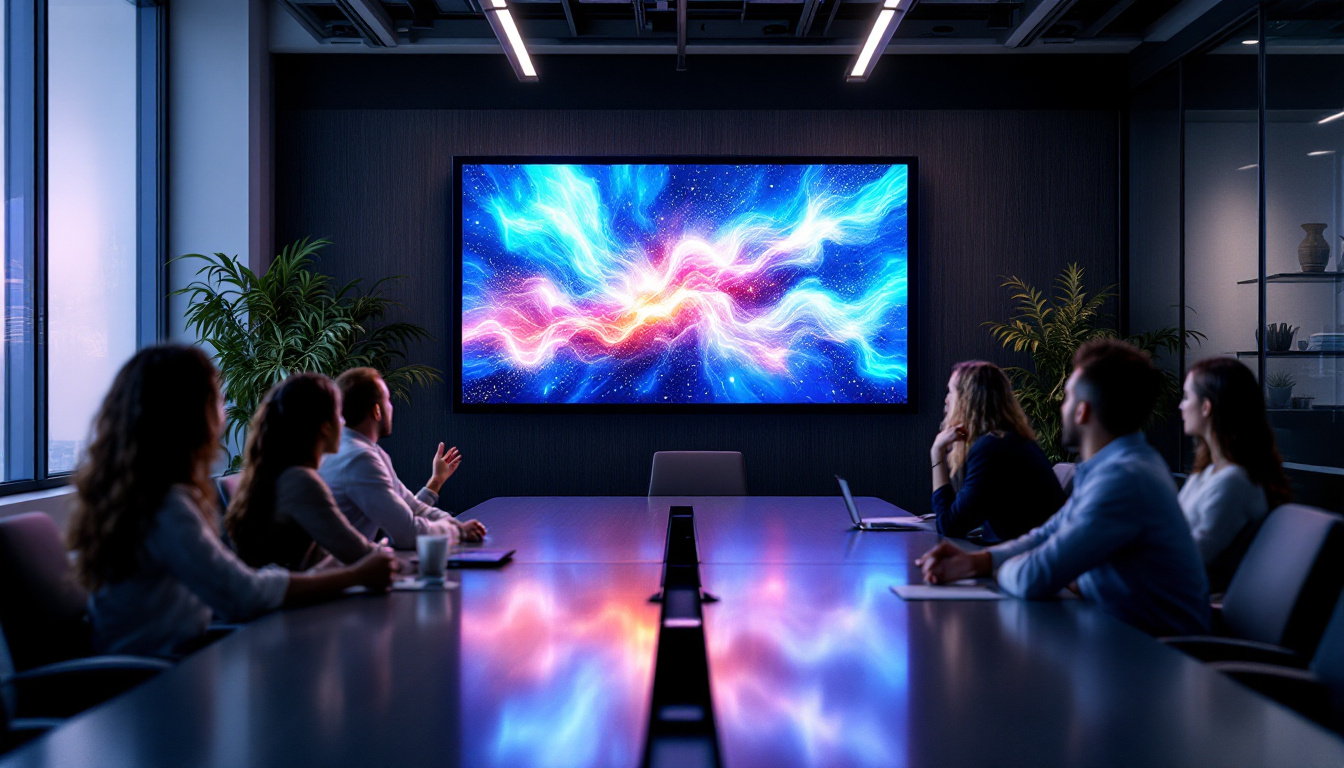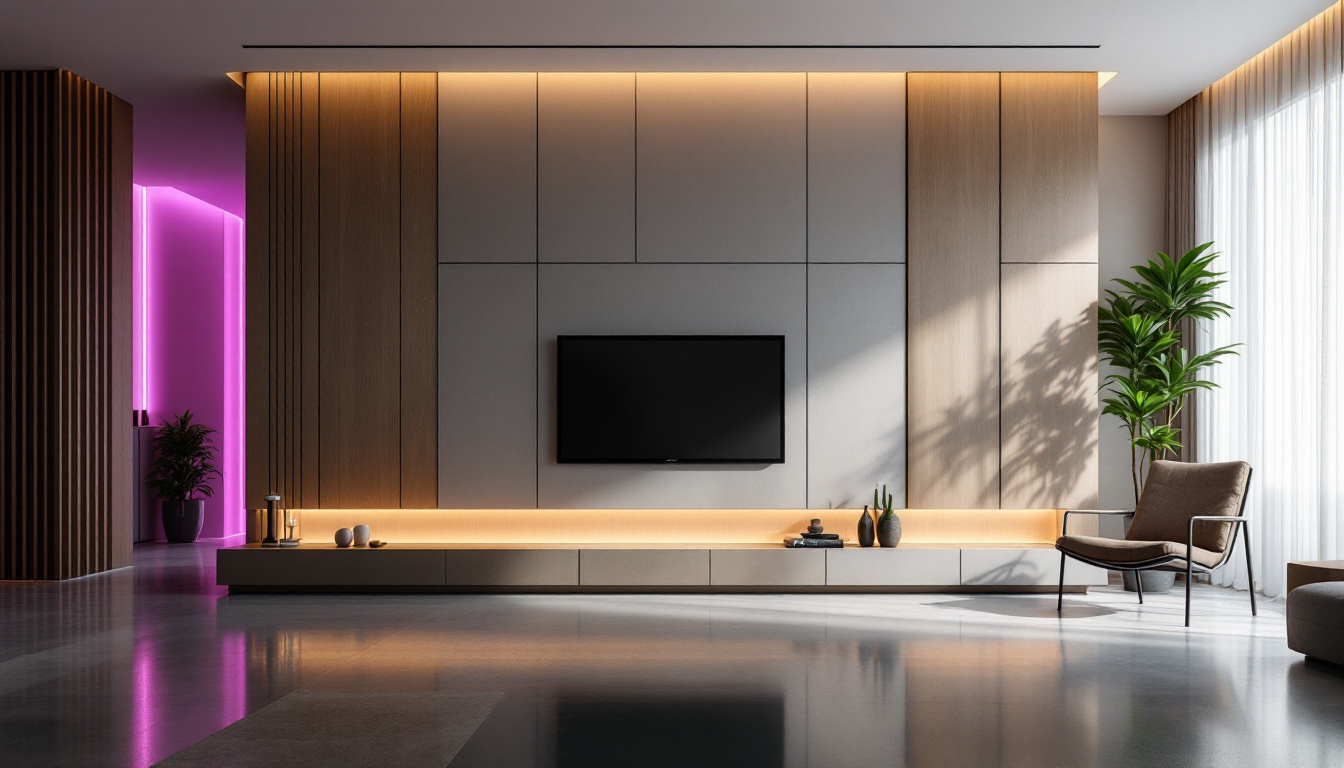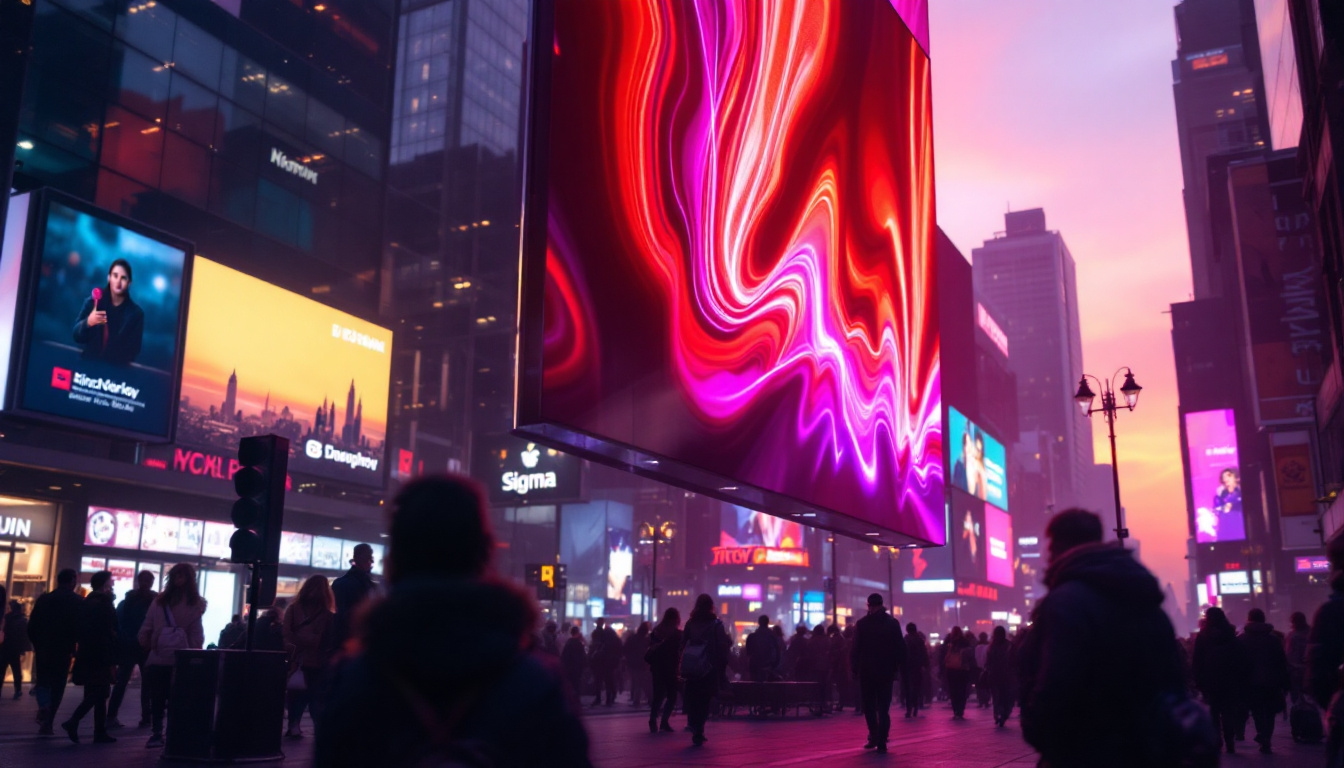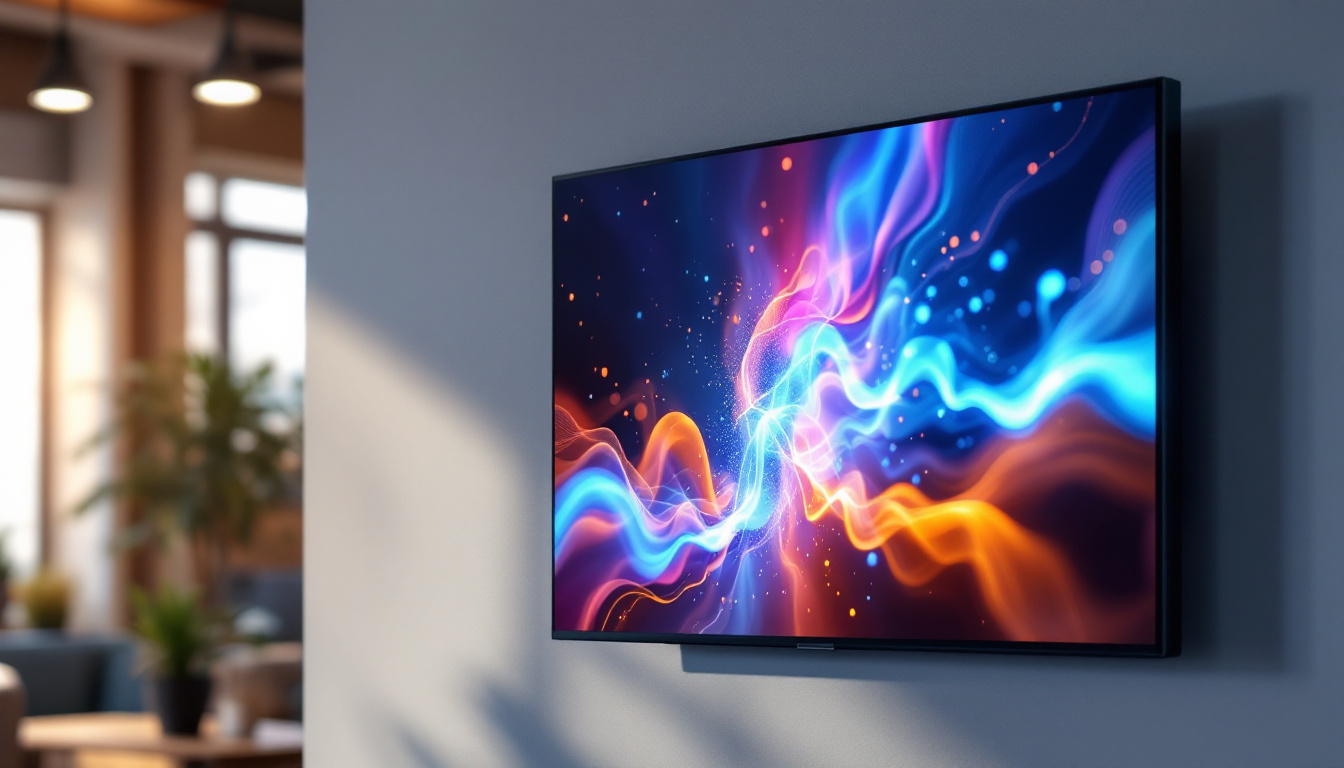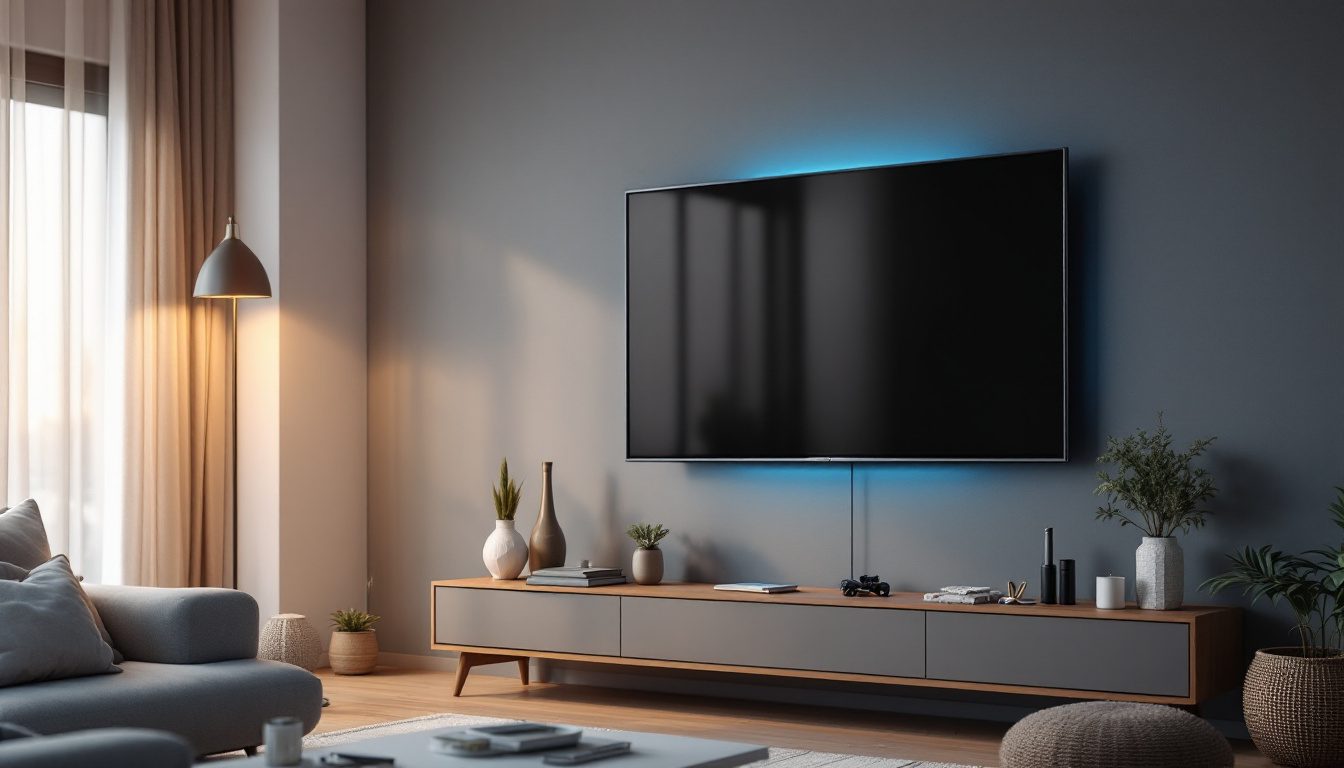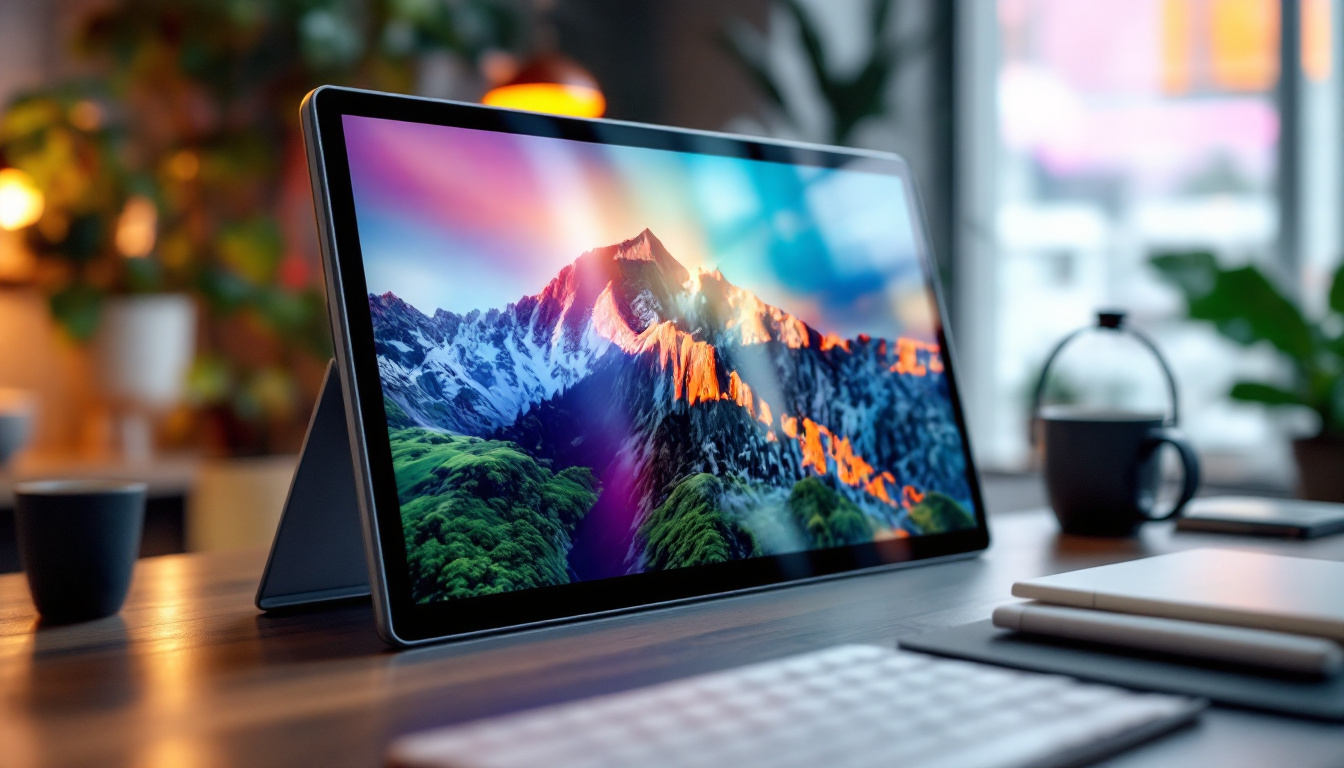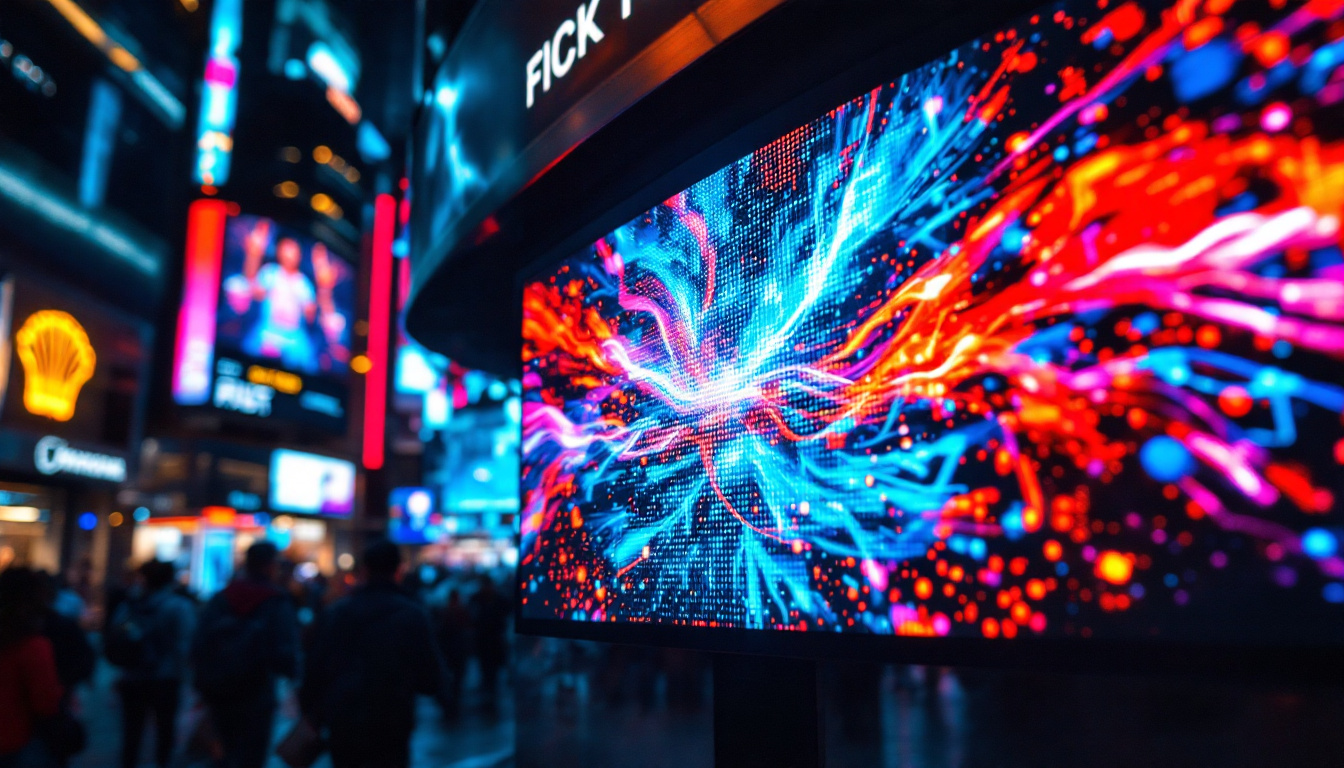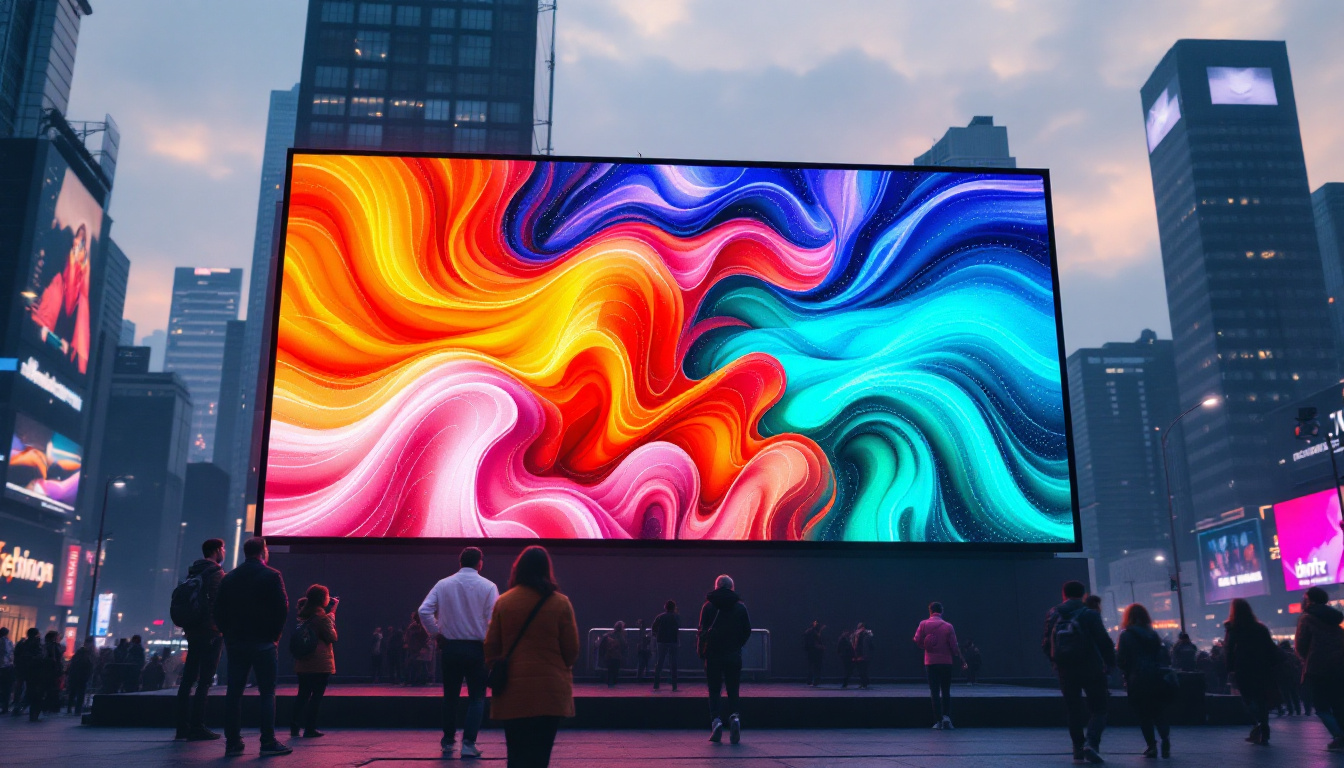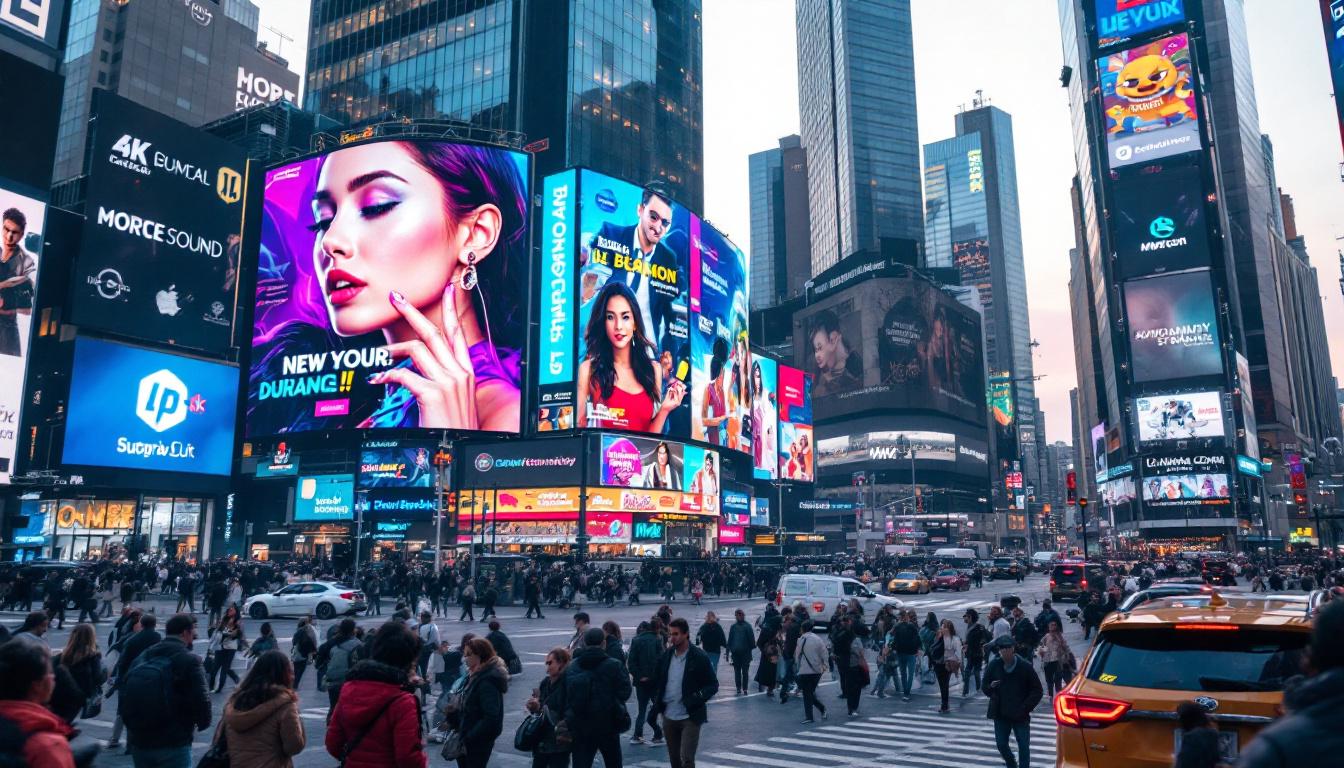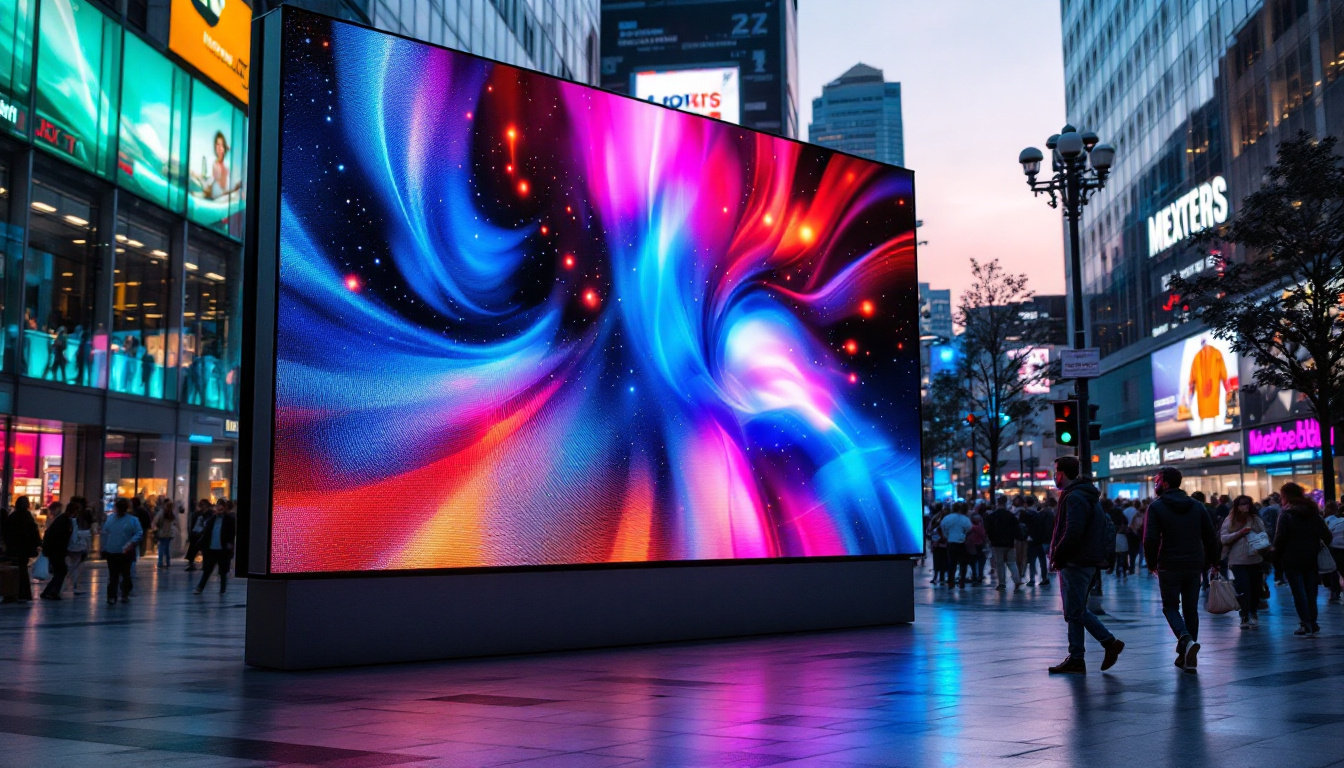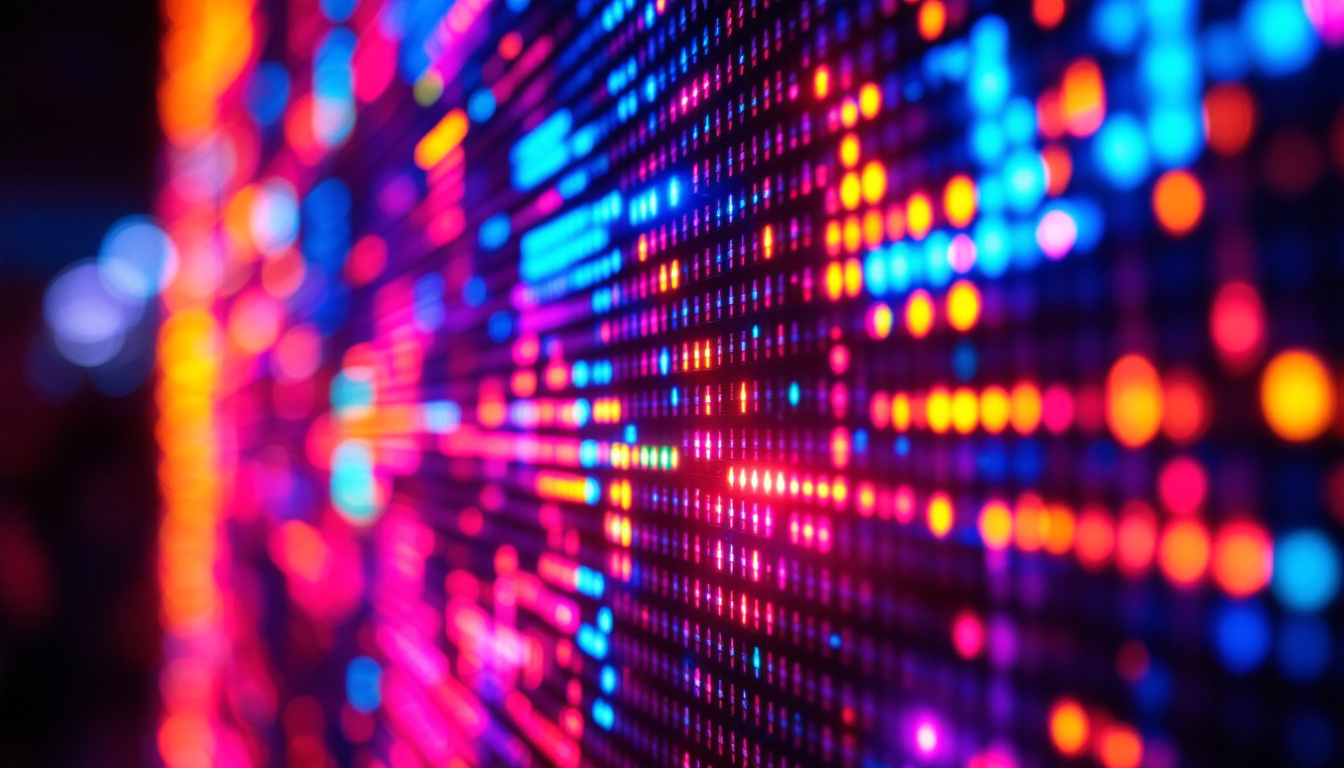The world of computer screens has evolved significantly over the years, with LED displays becoming a standard choice for both personal and professional use. However, one intriguing phenomenon that often arises with these displays is the moire pattern. This article delves into the intricacies of moire patterns on LED screens, exploring their causes, implications, and ways to mitigate them.
Understanding Moire Patterns
Moire patterns are optical illusions that occur when two grids or patterns overlap, creating a new pattern that is not present in either of the original designs. This phenomenon can be particularly noticeable in digital displays, where the fine pixel structure of the screen interacts with the patterns of images or graphics being displayed. The visual complexity of moire patterns can be both fascinating and frustrating, as they can detract from the intended visual message while simultaneously captivating the viewer’s attention with their unexpected designs.
What Causes Moire Patterns?
The primary cause of moire patterns is the interference between two regular patterns. In the context of LED displays, this often happens when the pixel grid of the screen overlaps with the fine details of an image. For instance, when a high-resolution image is displayed on a screen with a lower pixel density, the pixels may not align perfectly with the image details, resulting in the appearance of unwanted patterns. This misalignment can be exacerbated by the angle at which the image is viewed, as slight shifts can alter the way the patterns interact, leading to a dynamic visual experience that changes with perspective.
Moreover, moire patterns can also emerge from the scanning process of images, particularly when digitizing photographs or artwork. If the scanning resolution is not high enough, or if the original image contains fine lines or textures, the resultant digital image may exhibit moire effects when viewed on a screen. This issue is particularly prevalent in the world of print media, where the halftone dots used in printing can create moire patterns when scanned or reproduced, complicating the reproduction of intricate designs and textures.
Examples of Moire Patterns
Moire patterns can manifest in various forms, often appearing as wavy lines, ripples, or other geometric shapes. These patterns can be distracting, especially in professional settings where precision is crucial, such as graphic design or photography. For example, a photograph of a fabric with a tight weave may produce moire patterns when displayed on a screen, making it difficult to accurately assess the colors and textures. In fashion design, this can lead to misrepresentations of fabric quality and color, which can have significant implications for both designers and consumers alike.
In some cases, moire patterns can even affect the legibility of text. When fine fonts are displayed on a screen, the interaction between the font’s design and the pixel grid can lead to blurriness or distortion, making it challenging for viewers to read the text clearly. This is particularly problematic in digital signage or user interfaces where clarity is paramount. Additionally, artists and designers often have to consider moire effects when creating intricate patterns or textures, as they can unintentionally alter the viewer’s perception of the work. Understanding how to manage and mitigate these patterns is essential for creating visually appealing and effective designs in both digital and print formats.
The Impact of Moire Patterns on LED Displays
While moire patterns can be visually striking, they often pose challenges in various applications. Understanding their impact is essential for users who rely on LED displays for professional or creative work.
Implications for Graphic Design
In the realm of graphic design, moire patterns can significantly alter the perception of an image. Designers must be aware of how their work will appear on different screens, as moire effects can detract from the intended aesthetic. This is particularly important when preparing images for print, where accurate color representation and detail are paramount.
To mitigate the risk of moire patterns, designers often employ techniques such as blurring or adjusting the resolution of images before displaying them on screens. These adjustments can help ensure that the final output aligns more closely with the designer’s vision, minimizing the chances of unwanted visual artifacts. Furthermore, the choice of patterns and colors can also play a crucial role; for instance, opting for simpler designs or using color gradients can reduce the likelihood of moire interference, allowing the artwork to shine without distraction.
Challenges in Photography
Photographers also face challenges related to moire patterns, especially when capturing images of subjects with intricate details. For instance, photographing a subject wearing a patterned shirt may result in the camera picking up moire effects, which can compromise the quality of the image.
To counteract this issue, photographers may use specific techniques such as adjusting the aperture or using different lenses that can help reduce the likelihood of moire patterns. Additionally, post-processing software can be employed to correct any moire effects that may have inadvertently appeared in the final image. In some cases, photographers might even choose to shoot in RAW format, which allows for greater flexibility in editing and can help in fine-tuning details that may have been affected by moire during the initial capture. Moreover, understanding the interaction between the camera sensor and the subject’s texture can lead to more informed decisions about lighting and composition, further minimizing the risk of unwanted patterns.
Effects on Video Production
In video production, moire patterns can be particularly problematic. When filming scenes with fine details, such as fabrics or intricate backgrounds, the resulting footage may exhibit unwanted patterns that distract from the overall quality of the video. This can be especially true in high-definition formats, where the resolution can exacerbate the visibility of moire effects.
To address these challenges, video producers often utilize various techniques, such as adjusting camera settings, using diffusion filters, or employing post-production techniques to minimize the appearance of moire patterns. These strategies help ensure that the final video product is polished and professional. Additionally, understanding the frame rate and shutter speed can also influence how moire patterns manifest in motion; for example, higher frame rates may capture more detail, making it essential to balance these settings to avoid introducing unwanted artifacts. Furthermore, the use of advanced video editing software can allow for targeted corrections, enabling filmmakers to isolate and address specific areas where moire may detract from the visual storytelling, ensuring a seamless viewing experience for the audience.
Mitigating Moire Patterns on LED Displays
While moire patterns can be a nuisance, there are several strategies that users can employ to minimize their occurrence on LED displays. Understanding these methods can enhance the viewing experience and improve the overall quality of displayed content.
Adjusting Display Settings
One of the simplest ways to reduce moire patterns is by adjusting the display settings on the LED screen. Many modern monitors come equipped with various settings that allow users to modify aspects such as brightness, contrast, and sharpness. By experimenting with these settings, users may find a configuration that minimizes the visibility of moire patterns.
Additionally, some displays offer features like anti-aliasing or image smoothing, which can help reduce the harshness of pixel edges and create a more visually appealing image. These settings can be particularly useful when viewing images or videos with intricate details.
Using Higher Resolution Displays
Investing in a higher resolution display can also significantly reduce the likelihood of encountering moire patterns. Displays with greater pixel densities, such as 4K or 8K monitors, provide more pixels per inch, allowing for finer detail representation. This increased resolution can help ensure that the pixel grid aligns more closely with the details of the displayed content, minimizing the chances of interference.
Moreover, higher resolution displays often come with advanced technologies that enhance image quality, further reducing the occurrence of moire patterns. Users looking to improve their viewing experience should consider upgrading to a display that meets their needs.
Post-Processing Techniques
For those working with images or videos that exhibit moire patterns, post-processing techniques can be invaluable. Software such as Adobe Photoshop or Lightroom offers tools specifically designed to address moire effects. These tools allow users to selectively blur or reduce the visibility of moire patterns without compromising the overall quality of the image.
In video editing, similar techniques can be applied using software like Adobe Premiere Pro or Final Cut Pro. By utilizing filters or effects designed to minimize moire patterns, editors can enhance the visual quality of their footage, ensuring a polished final product.
Conclusion
Moire patterns are an intriguing aspect of LED displays that can pose challenges in various fields, including graphic design, photography, and video production. Understanding the causes and implications of these patterns is essential for users who rely on high-quality visual output.
By implementing strategies such as adjusting display settings, investing in higher resolution screens, and utilizing post-processing techniques, users can effectively mitigate the impact of moire patterns. As technology continues to advance, the quality of LED displays will only improve, reducing the prevalence of these optical illusions and enhancing the overall viewing experience.
In a world increasingly reliant on visual communication, being aware of moire patterns and their effects can empower users to create and share content that is not only visually appealing but also true to their original intent. As the digital landscape evolves, understanding and addressing these challenges will remain a crucial aspect of achieving excellence in visual media.
Discover the Future of Visual Display with LumenMatrix
As you seek to overcome the challenges of moire patterns and strive for excellence in your visual presentations, LumenMatrix stands ready to elevate your experience. Our commitment to innovation in LED display technology ensures that you have access to the most advanced solutions, from Indoor and Outdoor LED Wall Displays to specialized options like Vehicle and Sports LED Displays. Embrace the power of clear, impactful visual communication with our diverse range of LED display modules. Check out LumenMatrix LED Display Solutions today and transform the way you share your message with the world.


